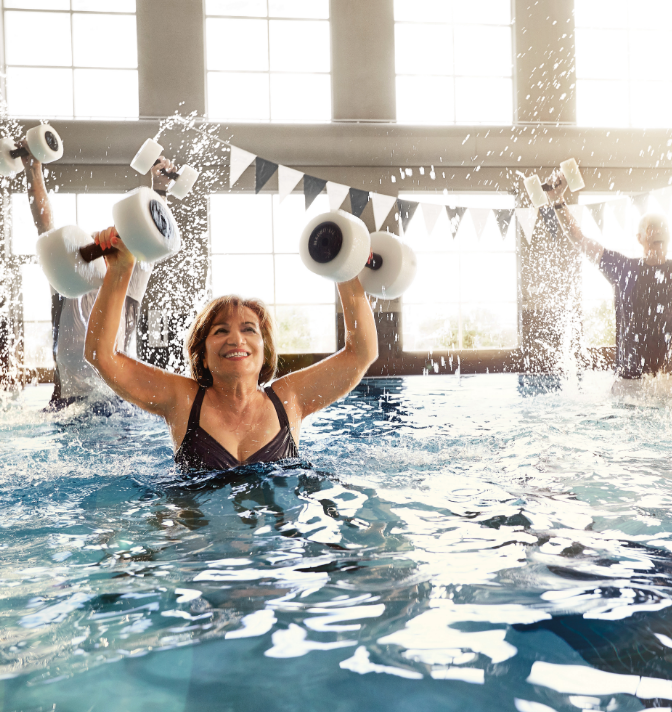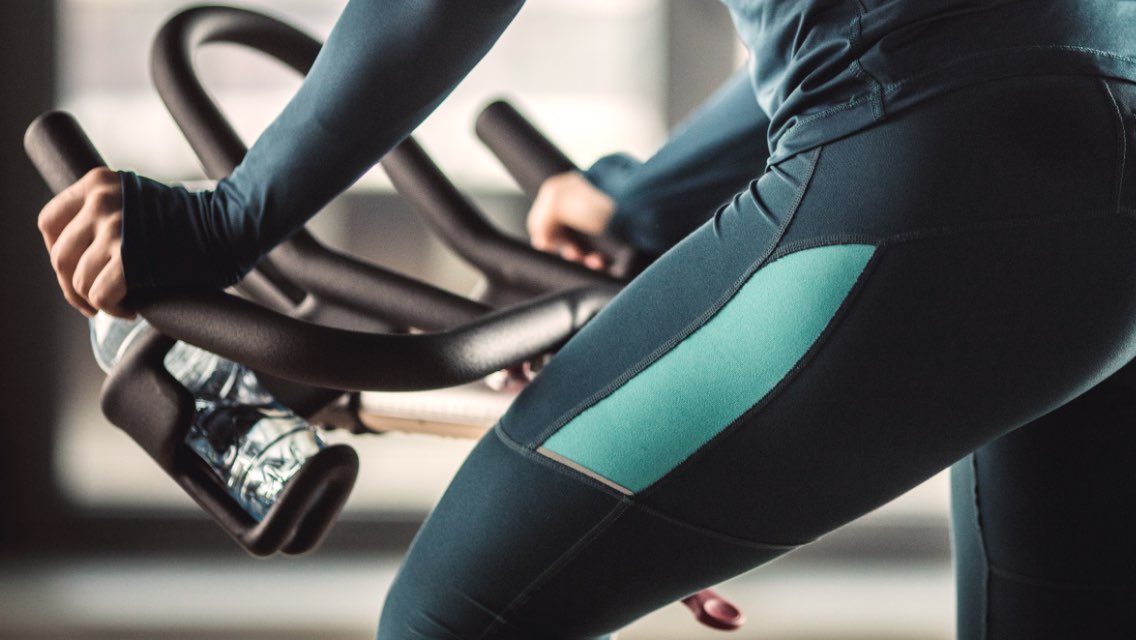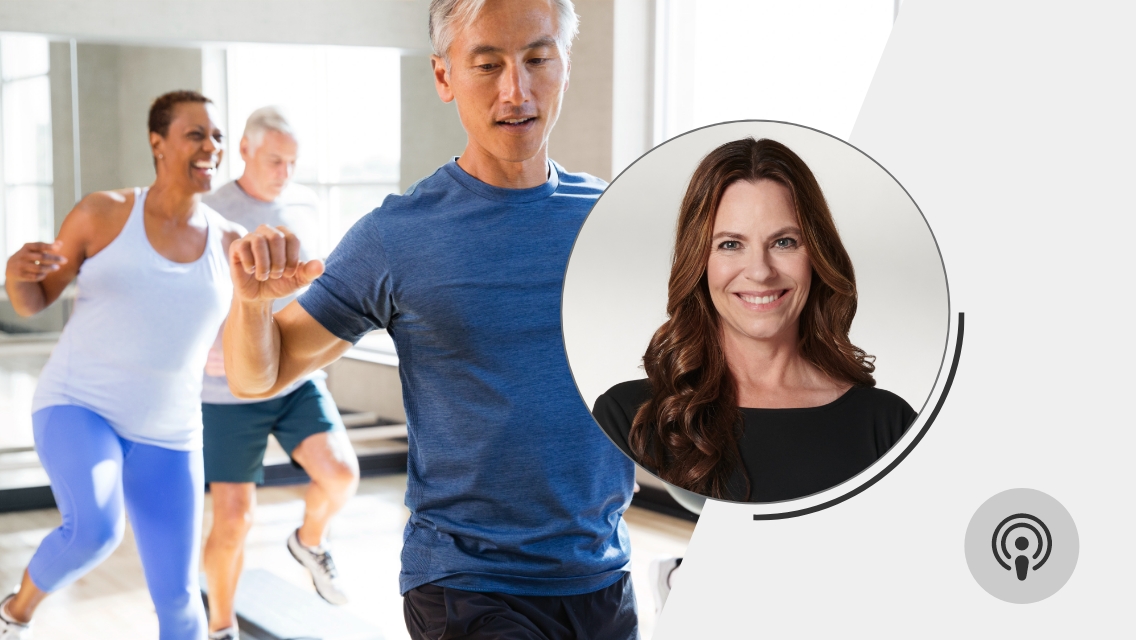Indoor cycling is a popular method of cardio training with many rewarding benefits — including improving heart health and boosting muscle endurance, to name a few. And while cycle classes have become more widespread over the last decade, many people still find themselves a little apprehensive to get on the bike.
“A lot of people think indoor cycling is really intimidating,” says Rob Glick, senior director of group fitness programming for Life Time and designer of the new ARORA Cycle class format. “They hear loud music and watch people spinning fast and they don’t see themselves doing that. But because you’re working with a stationary bike, the entry point is low. Nobody is in control of the resistance and pedaling speed except you!”
We spoke with Glick to learn more about how indoor cycling can be a great workout for everybody and to get his advice to alleviate some common concerns.
Life Time Editorial | Why is cycling such a good workout — no matter your fitness abilities?
Rob Glick | The great thing about cycling is that it’s low stress and gentler on the joints compared to other exercise like running or jogging, which means its accessible to nearly anyone dealing with almost any issue. Whether you have back or hip concerns or are coming back from an injury, we can make it work for you. It’s the perfect way to get your cardio going. It can meet you where you’re at on your fitness journey and then continue to take you where you want to go.
LTE | How often can I mix indoor cycling into my routine?
RG | Because cycling is gentle on your joints, it’s something you can do multiple days per week. It’s a great form of cardio to work into your routine three to five days each week. I’m a big fan of cross training, so I recommend mixing a few walks outside or on the treadmill into your routine as well.
LTE | How do I know what resistance and speed to start with on the bike?
RG | When taking an indoor cycle class, I encourage people to ride from a sense of feeling and to really connect with themselves. How fast you pedal and the resistance you use is entirely up to you. Take in what the instructor says but do what feels right for you. If the instructor asks for “moderate resistance,” you define what that means. Moderate resistance for your body may be different than it is for the person next to you.
LTE | What tips do you have for setting up the bike before class?
RG | The most important part of setting up an indoor bike biomechanically is the saddle height and its fore-aft position — the distance between the seat and the handlebars. Adjust the seat height so it aligns with the top of your hipbone. Once you’re on the bike, check that you have just a slight bend in your knee when the pedal is at the lowest point. This allows you to use as much muscle as possible in a fixed range of motion while you’re connected to the bike.
The handlebar height and the bike’s fore-aft position is a matter of comfort. Make sure you’re able to maintain a neutral spine throughout the ride. If you have lower-back issues, you may feel more comfortable with the handlebars raised slightly.
(For more on how to set up a bike correctly follow these “6 Tips for Your First Indoor Cycle Class.”)
LTE | I’ve heard an indoor bike can be uncomfortable. How can I make it more comfortable?
RG | It takes a while to get used to sitting on a regular indoor bike saddle. Many people opt to use a gel seat cover or wear padded bike shorts or pants to make their workout more comfortable.
Outside of that, dress however you feel best. Most people like to wear bike shorts or leggings along with a workout top. For footwear, cycle shoes are ideal if you have them. Most of Life Time’s indoor cycle bikes accommodate either SPD® cleats or LOOK® Delta style clips, and some are equipped to use both. If you don’t have cycle shoes, no need to worry — all the bikes can be fitted with cages that can fit any pair of athletic shoes.
LTE | What tips do you have for preventing injury while indoor cycling?
RG | Always pedal with some resistance on the bike to keep it stable. Make sure that your knees are tracking forward down the midline of your foot. Try not to over grip the handle bars; keep a light grip with your hands and change your hand position periodically so you don’t overstress your wrists.
Throughout the ride, keep a neutral spine by bending at the hips and avoid a “hunch” position in your mid-back. Setting up the bike correctly is a big part of keeping the correct posture.
LTE | How does ARORA Cycle differ from other Life Time cycle formats?
RG | In ARORA Cycle, we have quieter music with a selection of songs that span through the decades. The room will be a bit lighter, and lights won’t flash or change throughout the class. We’ll spend more time on the front end of class to discuss bike fit and warm up our bodies. Our instructors will work with you to ensure you’re set up properly. And throughout class, we’ll spend most of the time in the saddle, with the option to come out of the saddle if needed.
One way that it is similar to our other cycle classes, however, is that ARORA Cycle also promotes a social environment that’s inclusive to all.
Ready to take on your first class? Read more: “9 Ways to Make the Most of an Indoor Cycle Class.”





